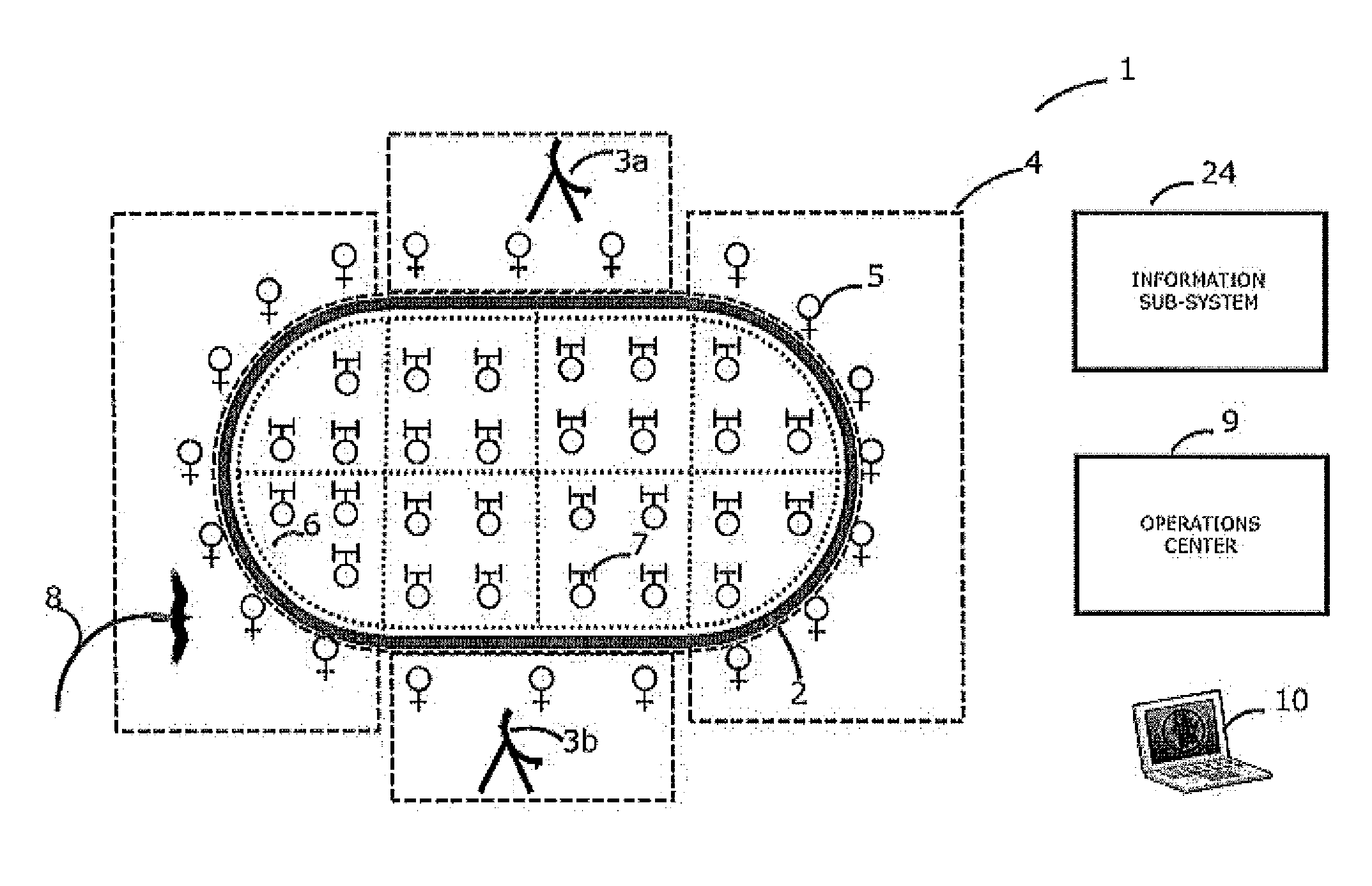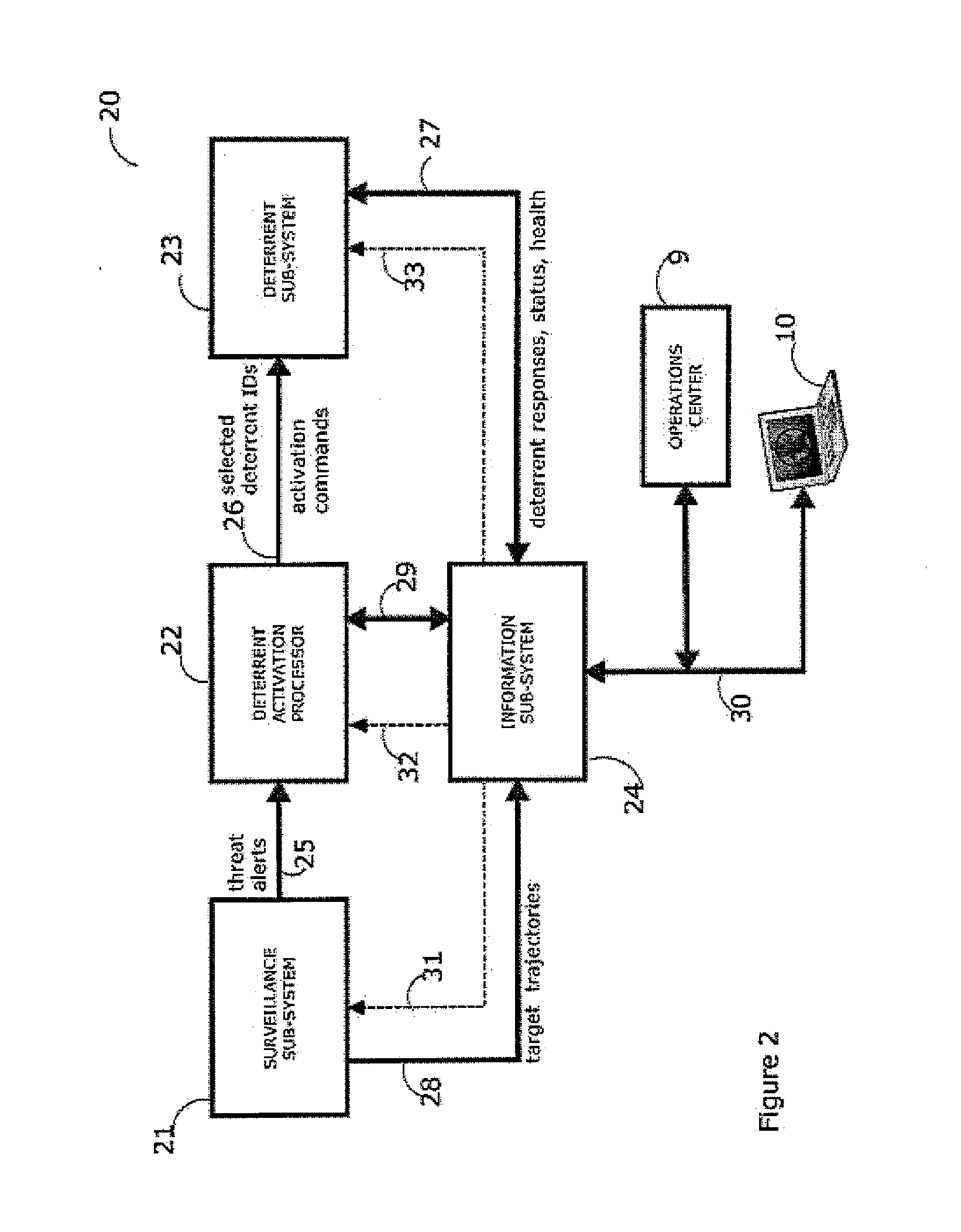Device & method for smart, non-habituating, automatic bird deterrent system
a technology of automatic deterrent system and device, applied in the field of deterrent system, can solve the problems of bird health, billions of dollars in damage to aircraft, and significant loss of life, and achieve the effects of other hazards, and reducing the risk of birds
- Summary
- Abstract
- Description
- Claims
- Application Information
AI Technical Summary
Benefits of technology
Problems solved by technology
Method used
Image
Examples
Embodiment Construction
[0075]A deployment diagram 1 of a typical, automated bird deterrent system 20 (see FIG. 2) in accordance with the present invention is shown in FIG. 1. A protected area 2 represents a region that threatens birds or is threatened by birds. For the example of FIG. 1, the protected area 2 is a large tailings pond. A surveillance subsystem 21 (see FIG. 2) monitors birds that may come into the protected area and consists of two sensor apparatuses 3a and 3b located in this example on either side of the protected area 2. The sensor apparatuses 3a and 3b are preferably avian radars as described previously herein which together provide coverage of birds in the vicinity of the protected area. Two virtual lines of defense are implemented in this example, an outer line of defense and an inner line of defense. The surveillance subsystem 21 defines in this case four outer intrusion zones 4 that surround the tailings pond that make up the outer line of defense. A number of deterrent apparatuses 5 ...
PUM
 Login to View More
Login to View More Abstract
Description
Claims
Application Information
 Login to View More
Login to View More - R&D
- Intellectual Property
- Life Sciences
- Materials
- Tech Scout
- Unparalleled Data Quality
- Higher Quality Content
- 60% Fewer Hallucinations
Browse by: Latest US Patents, China's latest patents, Technical Efficacy Thesaurus, Application Domain, Technology Topic, Popular Technical Reports.
© 2025 PatSnap. All rights reserved.Legal|Privacy policy|Modern Slavery Act Transparency Statement|Sitemap|About US| Contact US: help@patsnap.com



